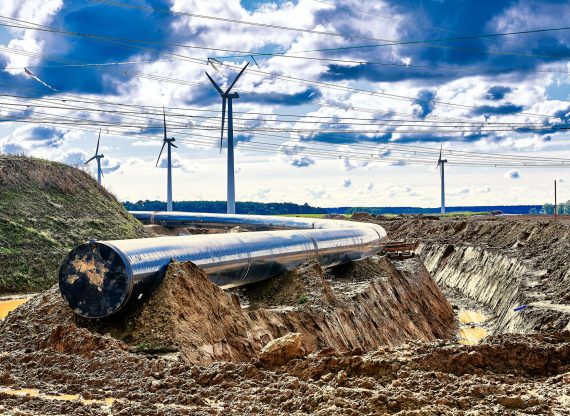Energy corridors could eliminate repetitive assessment stress syndrome

It takes a long time to get anything done in Ottawa. That’s true whether you’re trying to get your passport renewed or a multibillion-dollar energy project approved.
The passport office is trying to do better. But there is little evidence project approval is improving. Over the four years since Ottawa’s Impact Assessment Act — the “no more pipelines” law — went into effect only one project has received its seal of approval: the Cedar LNG project in British Columbia.
Touted as one of the greenest energy projects on the planet, Cedar LNG is the first Indigenous-owned facility of its type in the country. It involves some 600 new jobs, many for local Haisla Nation members. Despite these benefits, environmental approval took nearly 42 months. And that’s just one step in the lengthy approval process for energy and natural resource projects.
The Supreme Court’s recent ruling that some of the Impact Assessment Act’s dispositions are unconstitutional has given many people hope things will now speed up. In fact, the previous legislation wasn’t much better, with assessments taking a bit over four years on average. Assessment is required, not only of pipelines and oil sands projects, but also of power lines, large generating facilities, rail lines and highways.
Because of how difficult it is to get anything done, Canada has been losing tens of billions of dollars in investment in recent years, along with myriad good-paying jobs. Over the past decade, investment in construction for oil and gas extraction and pipeline transportation has fallen by half, from over $76 billion per year in 2014, to less than $38 billion today — and that’s without accounting for inflation. In the dollars of 2014 that $38 billion is just $30.2 billion and the decline is 60 per cent.
Time is money. When assessments take four or more years, it’s no surprise investors prefer looking elsewhere. It doesn’t have to be this way, however. Environmental assessments could be streamlined using what’s known as an “energy corridor” — a single right-of-way that undergoes a thorough assessment once, and where multiple infrastructure projects can then be built.
The idea is to consult all stakeholders and identify the necessary mitigation measures — once. That way, additional new projects don’t have to undergo the whole process all over again.
The approach also minimizes land disturbance.
It has already proved effective in Australia — which in so many areas seems to be ahead of us in smart policies. Like Canada, Australia had been struggling with lengthy, costly, and duplicative environmental assessments and approvals.
Much like Alberta, the Pilbara region of Western Australia has the benefit of being resource-rich but had needed a way to get its resources to tidewater where they could be exported. By adopting the corridor approach, the state was able to speed up development while at the same time respond to the concerns of Indigenous and other local communities. It also established clear options for future infrastructure development, minimized costs and increased efficiency — all of which significantly reduced project uncertainty.
Australia’s experience has helpful lessons for this country. Including First Nations as key stakeholders is winwin, helping governments in furthering economic reconciliation. The proposed Neestanan utility corridor, for instance, is a First Nations-led initiative that would cross Alberta, Saskatchewan and Manitoba. The aim is to transport oil and natural gas, as well as other resources like potash, wheat, and critical minerals, to global markets. The corridor, 100 per cent Indigenous-owned, would expedite energy infrastructure projects.
Public opinion is positive. According to an Ipsos poll done for the Montreal Economic Institute, a large majority of Canadians (66 per cent) support developing an energy corridor, with the highest support in Alberta and the Prairies. This bodes well for the Neestanan project, which already has the support of all three provincial governments.
It is obvious that Canada’s regulatory and review processes are discouraging investment in, and construction of, major energy projects. It’s also true that the world needs energy and that demand for oil and gas continues to increase. Canada’s energy is secure, reliable and produced responsibly and could be a great benefit to those of our allies who don’t have their own energy and are instead forced to rely on dubious or unfriendly sources. All we have to do is stop preventing ourselves from sending it where it needs to go.
Krystle Wittevrongel is a Senior Policy Analyst & Alberta Project Lead at the MEI and Gabriel Giguere is a Public Policy Analyst at the MEI. They are the authors of “Streamlining Energy Infrastructure Development: The Corridor Approach” and the views reflected in this opinion piece are their own.

